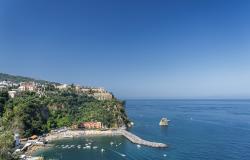words by Carol King
Pope Benedict XVI will tweet his first message next Wednesday, 12 December, on his new Twitter account @Pontifex.
The Pope’s first tweet coincides with the feast day of Our Lady of Guadalupe. People can send questions to the Pope on issues of faith using #askpontifex, some of which he will try to answer with his first tweets during his general audience. He will tweet through assistants, but will preview and approve each message. Senior media advisor to the Vatican, Greg Burke, said: “No one is going to be putting tweets into Pope’s mouth.”
The Pope’s @Pontifex account gained 10,000 followers in less than an hour and attracted more than 250,000 followers in its first day. ‘Pontifex’ means ‘pontiff’ in Latin as well ‘bridge-builder’. Initially, the Pope will tweet in eight languages: English, German, Spanish, Portuguese, Polish, French, Arabic and Italian, via his accounts @Pontifex, @Pontifex_de, @Pontifex_es, @Pontifex_pt @Pontifex_pl, @Pontifex_fr, @Pontifex_ar and @Pontifex_it. Other languages will be added in the future.
The Vatican has said it is unlikely that the Pope will retweet others. Asked if the Pope’s tweets will be infallible, a Vatican official said they will be part of the church’s magisterium.
According to Italian newspaper ‘L’Osservatore Romano’ the President of Israel, Shimon Peres, was one of the first to tweet a welcome to the Pope, saying: “Your holiness, welcome to Twitter. Our relations with the Vatican are at their best and can form a basis to further peace everywhere.”
The Pope sent his first tweet in 2012 from a Vatican account to launch the Holy See’s news portal. He follows in the footsteps of other religious leaders. Egypt’s Coptic Pope, Tawadros II, set up a Twitter account, @PopeTawadros, in late November 2012. The Dalai Lama set up @DalaiLama in February 2010 and has 5.6million followers.
The Vatican also announced the launch of The Pope App, which will carry live video of the Pope’s addresses, homilies and recent images. The app is available for iPhone and iPad; a version for Android is due out in January.
The Pope took to traditional media to publish a book on Jesus’ birth and early life, ‘L’infanzia di Gesù’. The English-language version is called ‘The Infancy Narratives’.
The book examines the life of Christ until the age of 30. However, given the lack of Biblical sources on this period, earlier this year the Pope conceded that his interpretation is not the final word on the subject, saying: “Anyone is free to contradict me.”
‘The Infancy Narratives’ starts with the Annunciation, when the Angel Gabriel told Mary she would bear the Son of God. It is the third volume in a series of books dedicated to the life of Jesus written by the Pope. The first was about Jesus’ public life; the second about his Passion, Death and Resurrection.
The Pope writes that the stories about Jesus’ infancy in the Gospels of Luke and Matthew are not myths but “history, history which really took place, history which was certainly interpreted and understood on the basis of the Word of God.”
He joins other academics in the debate regarding the date of Jesus’ birth: “The calculation of the beginning of our calendar – based on the birth of Jesus – was made by [the 6th-century monk] Dionysius Exiguus, who made a mistake in his calculations by several years,” he writes.
“The actual date of Jesus’ birth was several years before.”
The Pope also said that the inclusion of farm animals in traditional nativity scenes is historically inaccurate, saying: “In the gospels there is no mention of animals.”
Nevertheless, he concedes that the tradition will continue: “No nativity scene will give up its ox and donkey.”
More than one million copies of the 130-page book in nine languages were printed to sell in stores, ready for Advent. ‘The Infancy Narratives’ is on sale in 50 countries and went on sale in North America and the UK on 4 December. It is published by Rizzoli in conjunction with the Libreria Editrice Vaticana, and will eventually be published in 20 languages in 72 nations. The previous volume in the trilogy was translated into nine languages.















